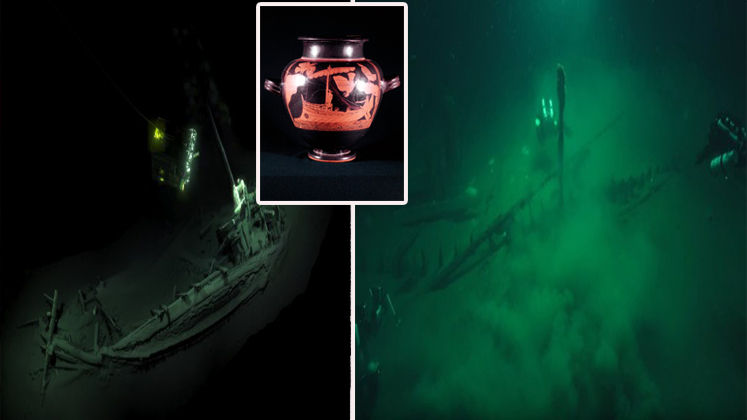Fears are mounting that a monstrous shark, measuring over 5 meters, is lurking off North Stradbroke Island. Witnesses reported, “She’s coming up, she’s massive!” The great white shark, with its razor-sharp teeth and intimidating presence, is the undisputed ruler of the ocean. Yet, beneath its fearsome exterior lies a mystery that even scientists can’t ignore. When researchers spotted one of these titans near New York City, it sparked a frenzy of tracking and speculation. In 2003, an Australian team attached a tracker to a 9-ton great white, only for it to vanish into thin water. What could take down such a formidable predator? A giant squid, a rogue orca, or something far more terrifying? Join us as we dive into this oceanic enigma.
In 2003, Australian scientists tagged a colossal 9-ton great white to study its migration. Months later, the shark’s tag washed ashore—without the shark. What could overpower an apex predator? Theories ranged from a colossal squid to an ancient creature lurking beneath the waves. This wasn’t the first strange event. Filmmakers Dave and Jenny Riggs, while documenting marine life in Bremer Bay, Australia, found nine massive sperm whales washed ashore, lifeless. Nearby, great white sharks circled, drawn by the decaying whales. Dave seized the opportunity, calling scientists to tag the sharks and study their behavior.
One tagged shark, a massive female named Shark Alpha, provided unremarkable data for months. But on Christmas Eve, her tracker showed a shocking change. Instead of her usual route, she veered off course, plunging to nearly 19,000 feet—1,000 feet deeper than great whites typically dive. The tag’s temperature readings spiked from 46°F to 76°F, suggesting Shark Alpha had been engulfed by something warmer, possibly inside a massive creature’s stomach. What could devour a 9-ton shark?
Scientists concluded Shark Alpha’s tag was swallowed by a predator far larger and faster than her. Dave Riggs, obsessed with the mystery, focused on the Southern Ocean’s “Kill Zone,” a perilous undersea valley teeming with predators like great whites, killer whales, and colossal squids. Determined to uncover the truth, Dave built a makeshift underwater vehicle from scavenged materials to withstand the treacherous descent. Despite the risks, he rallied a bold team to dive into the Kill Zone.
As they descended, the ocean buzzed with predatory giants. Just 65 feet down, they encountered 40 whale sharks and a pod of killer whales—an underwater battlefield. The team, overwhelmed, resurfaced, leaving the Kill Zone’s depths unexplored. However, they discovered that whale sharks and orcas dominated the area, raising questions about Shark Alpha’s demise. Whale sharks, peaceful filter feeders, were unlikely culprits. Orcas, however, are known to prey on sharks with their strength and intelligence. Yet, the 19,000-foot depth complicated this theory, as orcas rarely dive beyond a few hundred feet.
Dr. Alison Toer from Rhodes University, South Africa, studied orca-shark conflicts. In 2023, she documented a male orca, Starboard, swiftly killing a juvenile great white by targeting its liver. Starboard and his partner, Port, had hunted great whites with precision since 2002. While orcas seemed likely suspects, the depth of Shark Alpha’s demise suggested something else might lurk in the Kill Zone.
Could a giant squid be responsible? These elusive creatures inhabit depths of 1,000–2,000 feet, where Shark Alpha vanished. Measuring up to 59 feet, with powerful tentacles, they could drag a shark into the abyss. Evidence of squids attacking sharks exists, but the temperature spike to 78°F rules them out, as squids are cold-blooded.
What about prehistoric creatures? Spinosaurus, a 50-foot semi-aquatic dinosaur, was a land-based predator extinct for 72 million years, making it an unlikely culprit. Mosasaurus, a 50-foot marine reptile, could swim at great depths and devour a great white. However, it vanished 66 million years ago, and survival seems improbable given the ocean’s post-asteroid acidification.
The Megalodon, a 60-foot shark with 7-inch teeth, is a popular suspect. Fossil evidence suggests it preyed on sharks, but it’s believed extinct for 3 million years. While species like the coelacanth have been rediscovered, Megalodon’s size and coastal habitat make survival unlikely. If it adapted to deep seas, it might resemble a slow-moving sleeper shark, lacking the power to take down Shark Alpha.
Livyatan, an extinct sperm whale with 14-inch teeth, could rival Megalodon. Extinct for 9 million years, its size and surfacing needs make survival improbable. The “bloop,” a 1997 oceanic sound, sparked theories of sea monsters, but was later attributed to ice quakes, not creatures like Lovecraft’s fictional Cthulhu.
In 2014, researchers tracking great whites in the Kill Zone uncovered the truth. Shark Alpha’s temperature spike matched a great white’s internal temperature. A 16-foot cannibalistic great white, likely suffering from gigantism, devoured her. Great whites rarely prey on each other, but this giant shark dragged Shark Alpha to 4,000 feet, disorienting her for the kill. While sharks rarely target humans, Bremer Bay’s Kill Zone remains a place to avoid. Case closed—until the ocean reveals its next mystery.






















